What are DNA Microarray Assays?

Introduction
Hi there! Today we’re diving into the fascinating world of DNA microarray assays. If you’re curious about how scientists study genes and their functions, you’ve come to the right place. Let’s break down what DNA microarrays are, how they work, and why they are essential tools in research and medicine.
What is a DNA Microarray?
A DNA microarray, also called a DNA chip or biochip, is a powerful tool used to measure the expression levels of thousands of genes at once. Imagine a tiny glass slide that holds thousands of spots, each containing a specific DNA sequence. When scientists want to see how genes behave in different conditions—like healthy versus diseased tissue—they use these microarrays to compare gene activity across samples.
How Do DNA Microarray Assays Work?
The magic of DNA microarrays lies in a process called hybridization. Here’s a simple breakdown of how it works:
- Sample Preparation: Scientists start with samples, usually RNA extracted from cells. This RNA represents the genes that are actively being expressed.
- Labeling: The RNA is converted into complementary DNA (cDNA) and labeled with fluorescent dyes. These dyes will help us see where the RNA binds on the microarray.
- Hybridization: The labeled cDNA is then applied to the microarray, where it seeks out its complementary DNA sequences. If a gene is active in the sample, it will stick to its matching spot on the microarray.
- Scanning: After the hybridization, the microarray is scanned with a laser. The laser excites the fluorescent dyes, and a scanner captures the emitted light. The intensity of the light tells researchers how much of each gene is present in the sample.
- Data Analysis: Finally, scientists analyze the data (using software like TotalLab’s Phoretix Array) to see which genes are upregulated or downregulated in the sample, providing insights into gene function and disease mechanisms.

Applications of DNA Microarray Assays
DNA microarray assays have a wide range of applications in both research and clinical settings:
- Gene Expression Profiling: This is the most common use, helping researchers understand how genes respond to diseases or treatments.
- Biomarker Discovery: Microarrays help identify gene expression signatures associated with specific diseases, aiding in diagnosis and prognosis.
- SNP Detection: Single nucleotide polymorphisms (SNPs) can be studied using microarrays to understand genetic variations linked to diseases.
- Comparative Genomic Hybridization: This technique detects genetic abnormalities, such as duplications or deletions, especially in cancer research.
- Pathogen Detection: Microarrays can quickly identify multiple pathogens in a single sample, making them valuable for infectious disease diagnostics.
FAQs about DNA Microarray Assays
What is the difference between DNA microarrays and RNA-Seq?
While both DNA microarrays and RNA-Seq are used to study gene expression, microarrays rely on pre-designed probes, whereas RNA-Seq sequences the entire RNA sample, allowing for the detection of novel transcripts and greater flexibility in analysis.
Are DNA microarray assays expensive?
The cost of DNA microarray assays can vary based on the complexity of the experiment and the number of samples. However, they are generally more cost-effective for large-scale studies compared to some other genomic techniques.
How long does a DNA microarray assay take?
From sample preparation to data analysis, a typical DNA microarray assay can take anywhere from one to several days, depending on the specific protocols and the number of samples being processed.
What are some common errors to watch out for when using DNA microarrays?
Common errors can include poor sample quality, inadequate labeling, and incorrect hybridization conditions. It’s essential to follow protocols carefully and run controls to ensure data reliability.
FAQs about Totallab
What services does Totallab provide regarding DNA microarray assays?
TotalLab specializes in providing high-quality microarray analysis software in our Phoretix Array software. They also offer support to help researchers interpret their results effectively and a 21 CFR/GMP-compliant version of Phoretix Array for use in regulated pharmaceutical environments.
How can I contact TotalLab for assistance with my microarray project?
You can reach out to TotalLab via our contact us form, where you’ll find contact information and can inquire about specific services they offer for your research needs.
Conclusion
DNA microarray assays are transformative tools in the field of genomics, enabling researchers to gain insights into gene expression and its implications in health and disease. As these technologies continue to advance, they hold great promise for improving personalized medicine and our understanding of complex biological systems. If you’re interested in exploring DNA microarrays further or need assistance with your research, consider reaching out to professionals like those at TotalLab for guidance.
Thank you for reading! If you have any more questions about DNA microarray assays or related topics, feel free to get in touch using our contact us web form.
